What is a Whatsapp message template?
A WhatsApp message template is a pre-made message that businesses can use to communicate with customers over WhatsApp.
WhatsApp templates and use cases
These templates are structured, pre-approved messages that can be used for various purposes, such as sending promos, reminders, updates, and more. they often involve placeholders for personalized information like names, dates, or order numbers. They need to be approved by Meta’s team to ensure compliance with guidelines and avoid content violations.
Rather than sending content for an entire message, a business can use a message template by sending the template identifier and the appropriate parameters. Message templates are designed to reduce the likelihood of spam sent to users on WhatsApp.
Here’s how businesses are using WhatsApp templates across various functions:
Customer support
Swift issue resolution
Resolve customer inquiries efficiently with readily available answers to common questions.

Automated assistance
Offer 24/7 support with automated responses, ensuring customers receive timely assistance even outside business hours.

Personalized guidance
Guide customers towards self-service resources or connect them with the right support agent.

Issue resolutions
Provide status updates or instructions for problem-solving.

Product inquiry response
Answer product-related questions and provide helpful resources.

Sales
Targeted promotions
Deliver personalized product recommendations and exclusive deals based on customer preferences.

Effective follow-ups
Nurture leads and re-engage potential customers with timely reminders and incentives.

Payment confirmation
Provide instant confirmation of successful payments and set expectations for shipping.

Exclusive offer
Reward loyal customers with special discounts and exclusive offers.

Abandoned cart reminder
Gently remind customers about items left in their cart and encourage them to complete their purchase.

Personalized offer
Deliver tailored product recommendations based on browsing history or past purchases.

Appointment scheduling
Seamless booking
Allow customers to easily book, reschedule, or cancel appointments through interactive messages.

Reduced no-shows
Minimize missed appointments by sending timely reminders and confirmations.

Appointment reminders
Reduce no-shows and improve service flow with reminder templates.

Onboarding
Warm welcomes
Create a positive first impression with personalized welcome messages and helpful resources.

Step-by-step guidance
Guide new customers through the onboarding process with clear instructions and support.

Transactional communications
Essential updates
Deliver important account information, payment confirmations, and delivery notifications.

Proactive service
Alert customers about potential issues or delays, providing transparency and building trust.

Shipping update
Notify customers when their order has shipped and provide tracking information.

Delivery confirmation
Confirm successful delivery and express appreciation.

Notifications
Timely alerts
Inform customers about important updates, policy changes, or service disruptions.

Personalized reminders
Send reminders about upcoming payments, renewals, or expiring offers.

Feedback requests
Gather valuable insights after support interactions.

Reactivation
Re-engage inactive customers with personalized offers and incentives.

Away notifications
Set automated messages for out-of-office hours or holidays.

Benefits of pre-built templates
- Consistency: Maintain a unified brand voice and ensure all customer communications are professional and on-brand.
- Efficiency and scalability: Templates save time by automating repetitive messages like order confirmations, appointment reminders, or shipping updates.
- Improved customer experience: Templates deliver timely and consistent information to customers, enhancing their interaction with your business.
- Compliance and spam prevention: WhatsApp’s approval process helps businesses avoid sending spammy or irrelevant promotional messages, ensuring a positive, consent-based user experience.
- Personalization: Even with templates, you can add placeholders for personalization, making communication feel more tailored to the individual.
Types of WhatsApp Message Templates
WhatsApp offers a variety of message templates to cater to different business needs. Here’s a breakdown of the main types and how they can be used:
Greeting templates
Welcome new customers, introduce your brand, and set the tone for a positive relationship.

Promotional templates
Promote special offers, new products, or upcoming events to drive engagement and sales.

Transactional templates
Provide customers with important information about their orders, accounts, or payments.

Customer support templates
Offer timely assistance, answer common questions, and resolve customer issues efficiently.

Appointment scheduling templates
Confirm appointments, send reminders, and allow customers to easily manage their bookings.

Notification templates
Keep customers informed about important updates, policy changes, or service disruptions.

How to use placeholders and dynamic content effectively
Placeholders and dynamic content allow you to send WhatsApp messages that greet your customer by name, mention their recent order, and offer a relevant discount. They transform generic templates into personalized conversations, boosting engagement and customer satisfaction.
What are placeholders?
Think of placeholders as blanks in your template that get filled in with specific information when the message is sent. They’re represented by numbers within double curly braces, like this: {{1}}, {{2}}, {{3}}.
What is dynamic content?
Dynamic content is the information that replaces those placeholders. This could be anything from the customer’s name and order number to their preferred product category or appointment time.
The key to effective personalization is to strategically integrate dynamic content into your templates. Here’s how:
- Identify key variables: Determine what customer information is most relevant to your message. For order confirmation, it might be the customer’s name, order number, and delivery address.
- Map placeholders to variables: Connect each placeholder in your template to a corresponding data field in your customer relationship management (CRM) system or database.
- Take advantage of a messaging platform: A platform like Infobip simplifies this process. It allows you to integrate your data and automate the population of placeholders with dynamic content, ensuring each message is tailored to the recipient.
To ensure your messages are accurate and error-free, follow these guidelines:
- Preview before sending: Always preview your messages with sample data to confirm that placeholders are correctly populated and the message appears as intended.
- Test with different scenarios: Test your templates with various data inputs to ensure they function correctly across different situations and customer segments.
- Monitor and refine: Continuously track the performance of your templates. Analyze customer responses and make adjustments to optimize their effectiveness.
How to create effective WhatsApp Message Templates
Crafting effective WhatsApp message templates requires a blend of art and science. It’s about understanding your audience, aligning with your brand, and using the technical capabilities of the platform. Here’s a step-by-step guide, infused with technical insights from Infobip’s API, to help you master the process:
1. Define communication objectives
Before a single character is typed, establish a crystal-clear objective for your template. What action do you want the recipient to take?
Examples:
- Drive conversions: Promote a flash sale with a limited-time offer.
- Provide support: Guide users through troubleshooting steps or offer self-service resources.
- Confirm bookings: Send instant confirmation for appointments or reservations.
- Deliver updates: Provide timely order confirmations or shipping notifications.
2. Conduct audience research
To truly resonate with your audience, you need to understand their preferences and communication style.
Consider:
- Demographics: Age, location, language preferences.
- Behavior: Past purchases, app usage patterns, website interactions.
- Preferences: Preferred communication channels, content formats they engage with.
3. Align with brand tone
Your WhatsApp messages should be an extension of your brand identity. Maintain a consistent voice and style.
Reflect your brand’s personality:
- Language: Use appropriate vocabulary and tone of voice.
- Visuals: If using emojis, ensure they align with your brand image.
4. Create mobile-friendly content
Remember, your audience is on their smartphones. Optimize your templates for readability and engagement on smaller screens.
- Brevity is key: Use concise language, short sentences, and bullet points for easy digestion.
- Clear Call to Action: Use strong verbs and concise instructions (e.g., “View details,” “Claim offer”).
- Formatting: Use bold and italics sparingly to highlight key information.
5. Incorporate dynamic content
Personalization is paramount. Use placeholders and dynamic content to tailor messages at scale.
- Identify key variables: Determine the customer data needed for personalization (e.g., name, order ID, appointment time).
- Map placeholders: Connect each placeholder ({{1}}, {{2}}) to a corresponding variable in your CRM or database.
- Infobip’s API integration: Utilize Infobip’s API to seamlessly populate placeholders with dynamic content. Refer to the API documentation for specifics on templateData and placeholders parameters.
6. Testing and iteration
- Preview messages: Before sending, preview your messages with sample data to ensure accurate placeholder population and formatting.
- A/B testing: Experiment with different message variations to identify what resonates best with your audience. Track metrics like open rates, click-through rates, and conversions.
- Continuous improvement: Regularly analyze results and refine your templates based on data-driven insights.
7. Ensure compliance with WhatsApp guidelines
- Obtain opt-ins: Always obtain explicit consent from users before sending WhatsApp messages.
- Adhere to policies: Strictly follow WhatsApp’s Business Policy and Commerce Policy, paying close attention to content restrictions and quality guidelines.
Technical dive into WhatsApp Message Templates
Creating a template
- Endpoint: POST /whatsapp/2/senders/{sender}/templates
- Authentication: API Key, Basic Auth, IBSSO Token, or OAuth 2 with the whatsapp:manage scope.
- Rate limit: 200 requests per hour per account.
- Request body: Includes the template name, language, category (e.g., Marketing), and structure (header, body, footer, buttons, etc.).
- Template structure: Defines the content of the template, including text, placeholders, examples, buttons (URL, phone number, quick reply, etc.), carousels, and a limited-time offer option.
- Approval process: Once created, the template is submitted to WhatsApp for review and approval before it can be used to message end-users.
Sending a template message
- Endpoint: POST /whatsapp/1/message/template
- Authentication: API Key, Basic Auth, IBSSO Token, or OAuth 2 with message:send, whatsapp:manage, and whatsapp:message:send scopes.
- Rate limit: 4000 requests per second per account.
- Request body: Includes an array of messages, each with:
- Sender and recipient numbers: In international format.
- Content: Template name, template data (placeholders and their values), header (optional), body, buttons (optional), carousel (optional), language code, callback data (optional), notification URL (optional), URL options (optional), SMS failover (optional), entity ID (optional), application ID (optional), and bulk ID (optional).
Best practices for creating WhatsApp message templates
Relevance is key
- Understand customer needs: Tailor your messages to specific customer segments and their needs. Don’t send generic blasts.
- Timing matters: Send messages when they’re most relevant, such as order confirmations after a purchase or appointment reminders the day before.
As a travel agency you would send a template with flight information and hotel check-in details a day before the trip.
Personalize at scale
- Dynamic content is your friend: Use placeholders ({{1}}, {{2}}) to personalize messages with names, order details, or loyalty program status.
- Segmentation is crucial: Group customers based on their preferences and behaviors to send highly targeted messages.
As an eCommerce store you would send personalized product recommendations based on past purchases.
Optimize for mobile
- Keep it concise: WhatsApp users are on their phones, so get to the point quickly. Use short sentences and bullet points.
- Clear Call to Action (CTA): Make it obvious what you want the customer to do next (e.g., “Click here to view your order”).
For example, if you are a food delivery service you would send a template with a concise order summary and a “Track Order” button.
Content optimization
- Compelling language: Use engaging language that encourages interaction. Ask questions, offer incentives, or create a sense of urgency.
- Visual appeal: Use emojis (sparingly) and formatting (bold, italics) to make your messages more visually appealing.
As a clothing retailer, you would use emojis in a promotional template to highlight new arrivals.
Monitor performance
- Track key metrics: Monitor metrics like open rates, click-through rates, and conversion rates to measure template effectiveness.
- A/B testing: Experiment with different message variations to see what resonates best with your audience.
For example, as a bank you could A/B test two versions of a payment reminder template, one with a friendly tone and one with a more formal tone, to see which performs better.
Adhere to compliance
- Obtain opt-ins: Ensure you have explicit consent from customers before sending them WhatsApp messages.
- Respect WhatsApp’s policies: Familiarize yourself with WhatsApp’s Business Policy and Commerce Policy to avoid having your account flagged.
This would include a checkbox on your website for customers to opt-in to receive WhatsApp messages.
Steps for submitting templates for approval
Getting your WhatsApp message templates approved is crucial for engaging with customers on the platform. Here’s a step-by-step guide to navigate the submission process successfully:
1. Review WhatsApp’s guidelines
Before you start crafting your templates, familiarize yourself with WhatsApp’s Business Policy and Message Template Guidelines. Pay close attention to:
- Content restrictions: Understand what types of content are permitted and prohibited (e.g., no promotional content for healthcare).
- Formatting requirements: Adhere to character limits, formatting rules, and the use of placeholders.
- Quality standards: Ensure your templates are clear, concise, and provide value to the recipient.
2. Create your template
Use Infobip’s API or WhatsApp Business Manager to create your template.
- Define a clear objective: Determine the purpose of your message and the desired action from the recipient.
- Craft compelling content: Write concise and engaging copy that aligns with your brand voice.
- Incorporate placeholders: Use placeholders ({{1}}, {{2}}) to personalize messages with dynamic content.
- Choose the right category: Select the appropriate category for your template (e.g., Marketing, Utility).
3. Submit your template via the WhatsApp Business Platform API
If using Infobip’s API, submit your template using the POST /whatsapp/2/senders/{sender}/templates endpoint. Ensure you include all the required information in the request body, such as the template name, language, category, and structure.
4. Monitor the approval process
Track the status of your template submission. WhatsApp typically reviews submissions within 24 hours. You’ll receive a notification of the approval or rejection.
5. Address feedback (if necessary)
If your template is rejected, carefully review the feedback provided. Common reasons for rejection include:
- Policy violations: The content violates WhatsApp’s policies.
- Formatting issues: The template doesn’t adhere to formatting guidelines.
- Lack of clarity: The message is unclear or confusing.
- Revise your template based on the feedback and resubmit it for approval.
Common errors and how to avoid them
Even with the best intentions, it’s easy to make mistakes when creating WhatsApp message templates. Here are some common pitfalls to watch out for:
Non-compliant content
WhatsApp has strict guidelines about the types of content allowed in message templates. Common violations include:
- Promotional content for restricted industries: Healthcare and financial services often have limitations on promotional messages.
- Prohibited content: Avoid any content that is illegal, harmful, or offensive.
- Overly promotional language: Focus on providing value and information rather than aggressive selling.
How to avoid
- Thoroughly review WhatsApp’s Business Policy and Message Template Guidelines.
- Clearly categorize your template: Ensure it aligns with the permitted categories and use cases.
- Focus on providing value and building relationships.
Incorrect formatting
Failing to adhere to WhatsApp’s formatting requirements can lead to template rejection. Common errors include:
- Exceeding character limits: Pay attention to character limits for headers, body text, and buttons.
- Incorrect use of placeholders: Placeholders must be correctly formatted ({{1}}, {{2}}) and used in the designated order.
- Invalid characters or symbols: Avoid using special characters or symbols that are not supported.
How to avoid
- Refer to WhatsApp’s formatting guidelines.
- Use Infobip’s API documentation for guidance on placeholder usage.
- Preview your templates before submission to ensure correct formatting.
Lack of personalization
Generic messages can feel impersonal and disengaging. Avoid these mistakes:
- Failing to use placeholders: Maximize personalization by incorporating placeholders for names, order details, etc.
- Sending irrelevant content: Segment your audience and tailor messages to their specific needs and interests.
How to avoid
- Identify key customer data for personalization.
- Use dynamic content to create tailored messages.
- Use Infobip’s API to automate personalization at scale.
Outdated information
Ensure your templates are always up-to-date. Common issues include:
- Expired promotions or offers: Keep your templates current with active promotions.
- Inaccurate product information: Verify that product details, pricing, and availability are correct.
- Broken links: Regularly check that all links in your templates are functional.
How to avoid
- Establish a process for reviewing and updating your templates regularly.
- Use a content management system to manage template content.
- Monitor template performance and identify areas for improvement.
Tools and resources for creating WhatsApp Message Templates
Creating effective WhatsApp message templates can be a breeze with the right tools and resources at your disposal. Here are some essential ones to consider:
WhatsApp Business Platform API
The foundation of any WhatsApp business messaging strategy, the WhatsApp Business Platform API allows you to programmatically send and receive messages, integrate with your CRM, and access advanced features like message templates. Infobip provides a robust and user-friendly platform to use WhatsApp Business Platform API, making it easy to send personalized messages at scale.
Template creation tools
Simplify the template creation process with dedicated tools. These tools often provide:
- User-friendly interfaces: Drag-and-drop builders and intuitive editors make it easy to design templates without coding.
- Pre-built templates: Access a library of pre-approved templates for various use cases, saving you time and effort.
- Content suggestions: Get recommendations for effective messaging and content optimization.
CRM integrations
Connect your CRM system with your WhatsApp Business Platform API to personalize messages with customer data. This enables you to:
- Segment your audience: Create targeted campaigns based on customer demographics, behavior, and preferences.
- Personalize messages: Dynamically populate templates with customer names, order details, and other relevant information.
- Track customer interactions: Maintain a centralized record of all WhatsApp conversations for improved customer relationship management.
Compliance guides
Stay up-to-date with WhatsApp’s policies and guidelines. Compliance guides provide:
- Up-to-date information: Access the latest information on WhatsApp’s Business Policy and Message Template Guidelines.
- Examples and best practices: Learn from real-world examples and best practices for creating compliant templates.
- Checklist and resources: Utilize checklists and resources to ensure your templates meet all requirements.
Performance tracking tools
Monitor the effectiveness of your WhatsApp message templates with performance tracking tools. These tools offer insights into:
- Delivery and open rates: Track message delivery and open rates to assess reach and engagement.
- Click-through rates: Measure the effectiveness of your calls to action and links.
- Conversion rates: Analyze how your templates contribute to business goals like sales or lead generation.
Tips for optimizing engagement with WhatsApp Message Templates
As we already discussed, the best tips if you want to boost engagement with your WhatsApp messages are:
- Personalize: Use names, reference past interactions, and tailor content to individual preferences.
- Mobile-first: Keep messages concise, use visuals, and include interactive elements like buttons.
- Compelling content: Spark curiosity, highlight value, and create urgency.
- Strong CTAs: Use clear, concise calls-to-action with incentives.
- Monitor and iterate: Track key metrics, A/B test different versions, and continuously optimize.
FAQs
Keep on exploring
Read some of our latest blog posts

WhatsApp Flows for Business: In-app customer journeys
Discover how WhatsApp Flows can improve your customer journey. In this blog, we’ll explain what they are, how to set them up, and explore the top use cases.
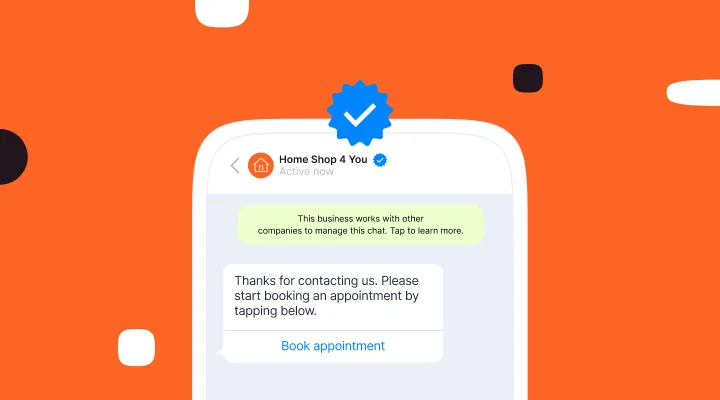
How to verify your WhatsApp Business Account (2025 guide)
Learn how to verify your WhatsApp business account and get blue tick verification. Understand the requirements, application process, and how Infobip can help your business become an Official WhatsApp Business Account.
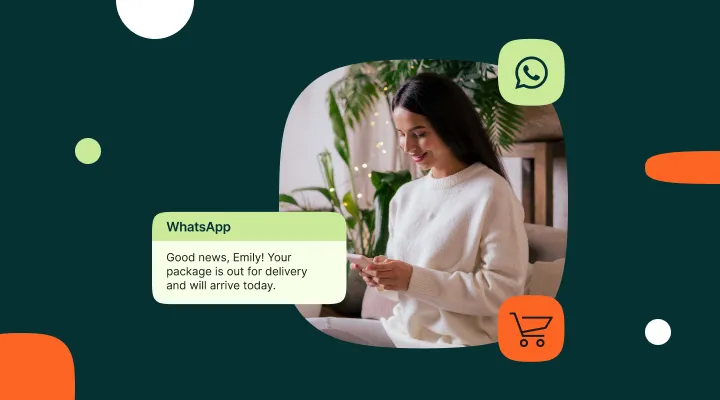
WhatsApp eCommerce customer journey: Strategies, chatbots and best practices
Learn how to use WhatsApp for eCommerce success with automation tips, marketing strategies, and real-world use cases.
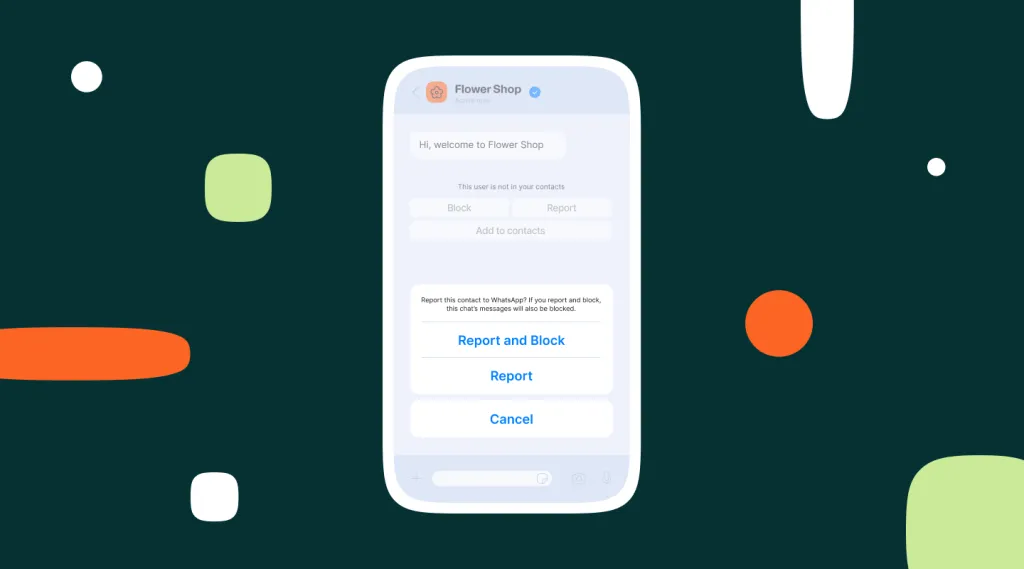
WhatsApp Business blocked: Reasons & how to unblock
Learn why your WhatsApp Business account is blocked, how to unblock it, and avoid future issues like spam or policy violations.
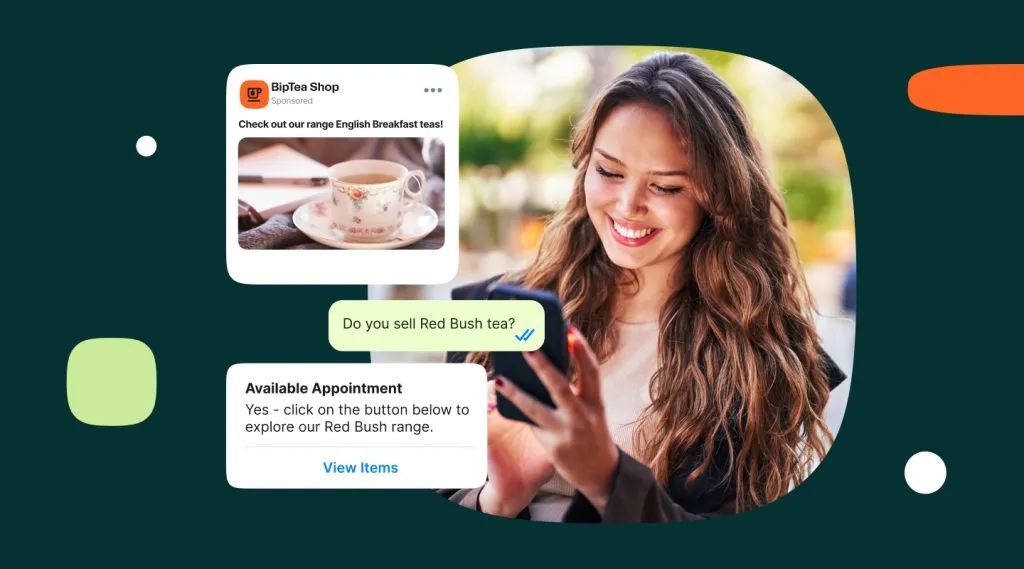
WhatsApp marketing: Campaigns, solutions, and strategy (2025 guide)
Learn how to build a winning WhatsApp marketing strategy. Discover campaigns, solutions, and software to boost engagement and ROI.
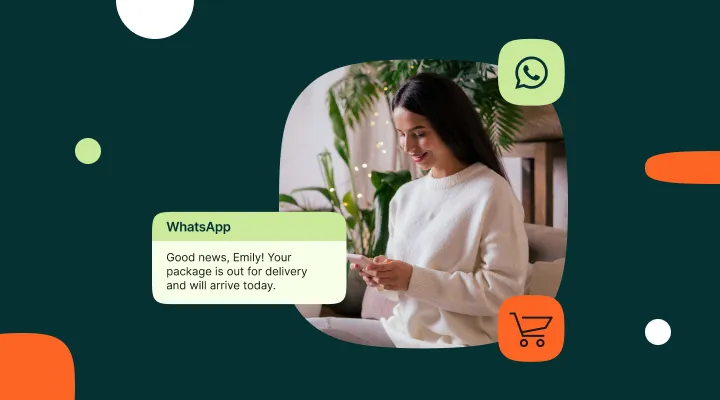
WhatsApp Utility Messages for post-purchase experience
Discover how to increase your customer lifetime value and loyalty by providing a conversational post-purchase experience with WhatsApp Utility Messages.

How to design and build a WhatsApp chatbot – with examples
Thinking about incorporating a WhatsApp chatbot into your communication strategy? Here’s everything you need to know to plan, design, and build a chatbot that helps you connect with your customers – without a line of code.

Meta Business Partner: How to find the right one?
Looking to find the right Meta Business Partner? This blog will walk you through the process and help you make the right decision.

All your WhatsApp Business FAQs answered
Get answers to your WhatsApp Business FAQs, whether you’re a small business starting out, a large enterprise scaling up, or seeking to enhance customer experience.







